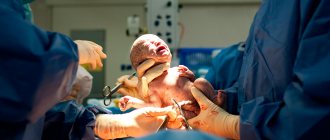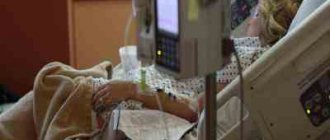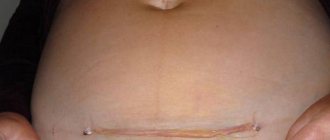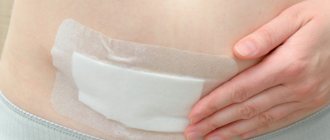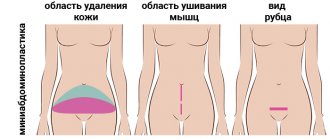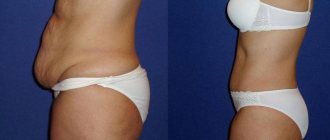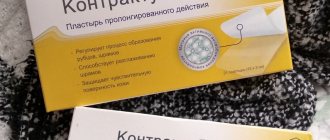In the first few hours after a fracture, osteosynthesis is possible - fixation of bone fragments using special structures. The purpose of the process is to ensure immobility and create conditions for the fusion of bones in the correct position.
If screws, metal plates or other fixing structures were used to heal the fracture, they must be removed after healing. The reason is that foreign bodies in the body can trigger cyst formation and rejection.
Surgery to remove metal structures after osteosynthesis of fractures
Removal of metal structures is a planned operation, which is performed after the consolidation (fusion) of the fracture , the formation of a full-fledged bone callus, this occurs after approximately 8-12 months. There is quite a lot of debate about whether it is worth removing the metal structure after osteosynthesis if it does not interfere?
A few reasons:
- In any case, this is a foreign body and no one can predict how the metal will behave in a few years, even though it is a high-tech titanium alloy. This includes metallosis, and suppuration of metal structures, up to such complications as osteomyelitis.
- If the metal structure begins to interfere after 3 or more years, then the callus will “grow” over the plate or screws, or the rod, so that it will be very difficult to technically remove it. Therefore, implants should be removed routinely approximately one year after installation.
Another thing is that the removal of structures from the pelvic bones is often accompanied by heavy bleeding, extensive tissue damage, and the risk of trauma to the pelvic organs. As a result, implants should be removed only when absolute indications arise—complications, signs of implant rejection, etc. Only structures that fix the symphysis pubis can be removed as planned; during this operation, extensive trauma can be avoided.
Emergency removal of metal structures
Indications for emergency removal may include:
- deep suppuration,
- intolerance to the material from which the implant is made,
- unstable fixation,
- formation of a false joint,
- no signs of callus formation over time.
Technically, removal of osteosynthesis is a simple operation if the metal structure is installed correctly, according to the accepted technique. When the spokes are located externally, simple mechanical removal is performed. With intraosseous fixation using pins, nails, screws, a full-fledged operation is performed under general anesthesia or general anesthesia. As a rule, this is an intra-articular implementation. Skin dissection occurs with excision of the primary scar, or without excision. The joint capsule is opened, the structure is mechanically removed with special instruments, followed by suturing of the capsule, soft tissues, and skin.
To determine the condition of the implant, a control radiography is performed immediately before the operation to determine possible migration of screws or wires. Also the use of computed tomography.
Removal of wires after surgery
Kirschner wires are mainly used to fix small bones and joints (toes and hands, metatarsal and metacarpal bones). Immobilization is usually carried out for 4-6 weeks after surgery. Faxing can be either external, i.e. the end of the needle is located above the surface of the skin, and the inner one, i.e. the wire is completely submerged under the skin to reduce the risk of infection and patient discomfort. Used for temporary fixation. There is also submersible osteosynthesis with knitting needles and wires for osteosynthesis of larger bones according to Weber, for example, for:
- fracture of the patella;
- rupture of the acromioclavicular joint;
- fracture of the olecranon process.
In these operations, the pins and wires are removed 8-12 months after the operation, since the fusion of these bones requires more time and more stable fixation.
How to remove stitches at home
If you want to remove stitches yourself, follow two key rules - neatness and hygiene. Be sure to prepare for the procedure and reserve time - rushing in such a matter can cause unpleasant consequences.
Preparation and tools
Removing stitches after surgery requires a set of tools: you will need sharp scissors (surgical or nail clippers), tweezers, sterile bandages, antiseptic or alcohol, soap and a clean towel. The knife will not work - it may slip and you will injure yourself.
Boil the instruments well and wipe them with disinfectant liquid, wash your hands thoroughly. Wipe the area where manipulation will be performed with an antiseptic or alcohol.
Procedure
Find a well-lit area - removing stitches in the dark is dangerous. Sit comfortably so that the wound is clearly visible, then follow these steps:
- pick up the first knot with tweezers, lift it slightly and cut the thread, being careful not to touch the wound;
- carefully pull out the suture material, but so that only clean pieces of thread pass through the fabric;
- do not try to pull the knots through the tissue - they will get stuck and cause bleeding;
- keep cutting and pulling the threads until you get rid of them completely.
There should be no pain, but slight discomfort is possible. After removing the suture, make sure that there is no residual material left in the wound. Wipe it again with alcohol, apply a sterile bandage or cover with a bandage. To prevent infection, it is advisable to treat the surface with antibiotic ointment.
The strength of the tissues after the sutures are removed is low, so protect the wound from damage, sun, cold and dirt. Check the surface of the skin daily to make sure the healing process is going well.
Removal of pins and wires after osteosynthesis of the patella according to Weber
For fractures of the patella (patella) with displacement of fragments, an osteosynthesis operation is performed, i.e. fastening of bone fragments to restore the integrity of the bone and, accordingly, the function of the knee joint. Because if you refuse surgery, the patient risks remaining disabled.
For osteosynthesis of the patella, the Weber technique is used in the vast majority of cases. When bone fragments are fastened with two titanium Kirschner wires and additionally tightened with titanium wire in an 8-way pattern. This allows you to quickly and very effectively restore damaged bone and, importantly, the metal structure is minimal in cost. But she has one big minus. Very often, patients experience discomfort and pain in the area of the pins and wire, since it is located right under the skin. Therefore, removal of the metal structure from the patella is often performed.
After the bone has grown together and the metal structure has fulfilled its function, it can be removed. Complete bone fusion occurs in 6-8 months, in some cases 1 year. It is after this period that the metal can be removed.
Before this operation, standard blood tests must be performed; the list can be viewed here.
The operation is often performed in a day hospital setting, i.e. a few hours after the operation the patient can go home. Local anesthesia, conduction or anesthesia. The operation itself takes 30 minutes. Finding wire and knitting needles is usually not difficult for the surgeon. After the metal structure is removed, the wound is sutured and an aseptic dressing is applied. The patient comes for dressings on the first day, then he can change the dressings himself or in a medical institution near his home. Sutures must be removed 14 days after surgery. In the early postoperative period, painkillers and antibacterial drugs are prescribed.
Approximately 1 month after surgery to remove the metal structure from the patella, you can gradually increase the load and return to your normal rhythm of life.
Caution - danger
However, the process does not always go smoothly. Signs of problems with wound healing include:
- continuous inflammatory process with the growth of the lesion (more than 5 days);
- bleeding from the wound (wetting);
- suppuration in the wound area;
- loose condition of tissues near seams or staples;
- discharge from the wound that is whitish, greenish or yellow with an unpleasant odor;
- increased body temperature;
- weakness;
- incessant chills.
All these symptoms require immediate treatment at the hospital where the surgery was performed.
The cost of calling a surgeon is from 3,500 rubles.
Staff – experienced doctors with extensive work experience, including candidates of medical sciences
Removing the plate after surgery
Plates and screws are used to fix almost any bone in the human body. This is a very reliable and convenient method of osteosynthesis. Today, there are a huge number of plates of various shapes, sizes and modifications for a certain type of fracture. The most common examples of plate osteosynthesis are:
- Osteosynthesis of the clavicle;
- Osteositis of the humerus
- Osteosynthesis of the external ankle;
- Osteosynthesis of tibia fractures;
- Osteosynthesis of metacarpal and metatarsal bones;
- Osteosynthesis of the radius and ulna.
The plates are usually removed 8-12 months after surgery.
Removal of the rod (pin) after surgery
Intraosseous (intramedullary) rods with locking screws or, as they are also called, pins are used to fix fractures of tubular bones, and in particular transverse and helical fractures with a small number of fragments and splinters. Also, preference for intraosseous osteosynthesis is given due to the speed of the operation, minimal invasiveness and low traumatic nature of the operation. It is worth saying that the fixation with the rods is very good and dosed loads on the operated limb can be given after just a few days.
After successful surgery and healing of the fracture, as a rule, the dynamic screw is removed and the load on the limb is increased for complete healing of the fracture. 1 year after surgery, when the fracture has completely healed, the screws and rod are routinely removed.
Almost always, the operation to remove the rod does not take more than 30 minutes. Removal occurs using similar tools as during installation.
Difficulties may arise when removing the rod; it is not installed correctly. Or the threads and screw heads are torn off. In this case, you will need to drill out the screws and rod.
Home services
If wound healing occurs without complications, then a procedure such as removing sutures after a cesarean section can be performed at home. Specialists at our clinic in Moscow will remove staples or sutures, taking into account the following factors:
- patient's well-being;
- features of the operation;
- the course of the inflammatory process.
As for the timing, under normal conditions, removal of staples after a cesarean section is carried out after 10-12 days.
After reviewing the medical history, assessing the condition of the sutures and general well-being, the nurse will treat the wound surface with an antiseptic solution and prepare sterile instruments. Only after this an experienced doctor at our clinic will perform the procedure for removing sutures (staples). Upon completion, the patient will be covered with a clean protective dressing.
Removal of the pin-rod apparatus, Ilizarov apparatus after surgery
Removing the Ilizarov apparatus is not difficult, since the needles and rods are located above the skin. After general or regional anesthesia is performed, the wires are “bitten” and removed from the bone. If there are rods, they unscrew. Wounds are treated with antiseptic solutions and aseptic dressings are applied.
Our clinic performs removal of all types of metal structures.
The cost of removing a metal structure depends on the complexity of the operation and the location of the implant, as well as on the type of anesthesia that is required for removal.
| Type of operation | Cost, rub.) |
| Removing the plate | from 28 000 |
| Removal of metal structures from the patella | from 28 000 |
| Removing a pin from tubular bones (rod) | from 28 000 |
| Removing dynamic, positioning screw | from 9 000 |
| Removing the spokes (end above the skin) | from 2 000 |
| Removing the spokes (end under the skin) | from 4 000 |
| Dismantling the Ilizarov apparatus | from 14 000 |
| Type of anesthesia | |
| Local anesthesia | 700 |
| Conduction anesthesia | from 3 000 |
| Spinal anesthesia | from 9 000 |
| Intravenous anesthesia | from 4 500 |
| Osteosynthesis | To the list of articles | Hospitalization of patients to the clinic |
Rehabilitation
This is the most important stage in the treatment of fractures, since prolonged immobilization leads to atrophy and circulatory disorders. Complications may develop - thrombosis, venous stagnation and lymphostasis.
The recovery period begins shortly after surgery and consists of two stages.
- Stationary. The patient takes medications, and after the pain stops, he is prescribed movement therapy and exercise therapy.
- The outpatient period begins after the patient is discharged home and can last up to a year. This depends on the complexity of the fracture and the treatment method chosen. There are no universal tips here, since each patient has his own rehabilitation program. The common goals are: Restoration of blood circulation;
- Elimination of muscle atrophy;
- Restoration of motor function.
An effective way to successful rehabilitation is reasonable physical activity. This process helps to overcome the patient’s somewhat constrained independent movements. Their positive effect is obvious. Each patient needs to exercise, gradually increasing the load so that the exercise does not cause discomfort.

